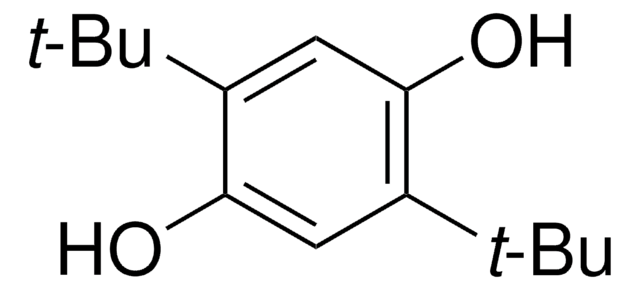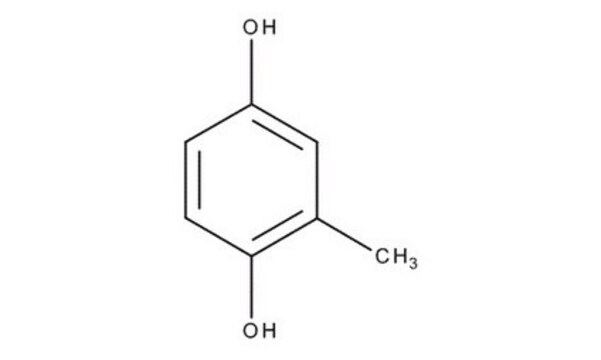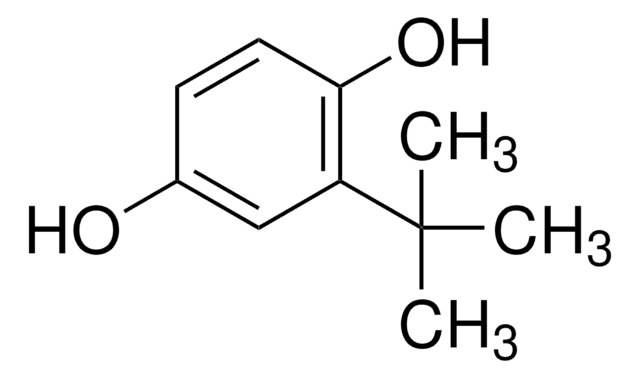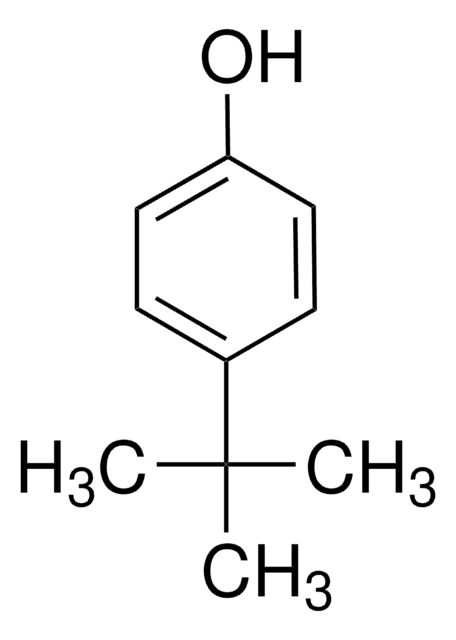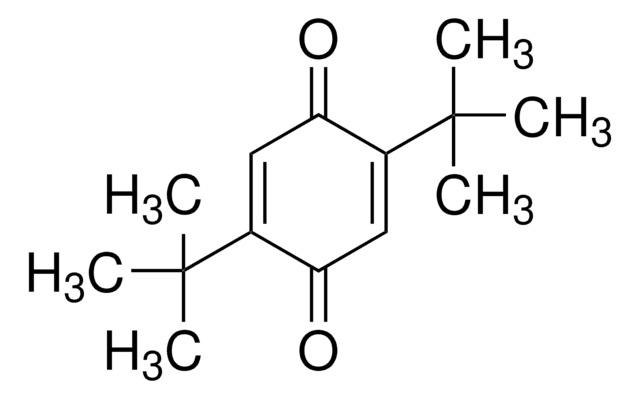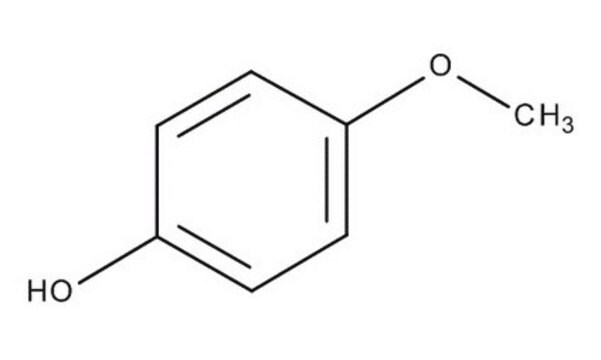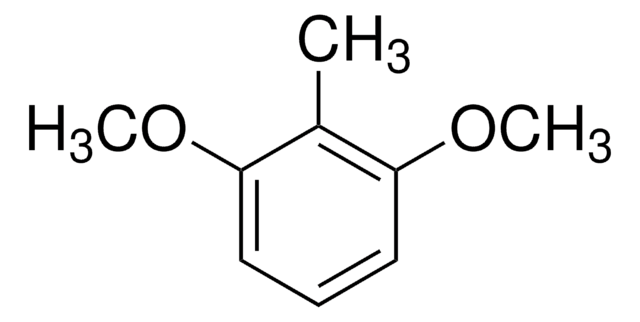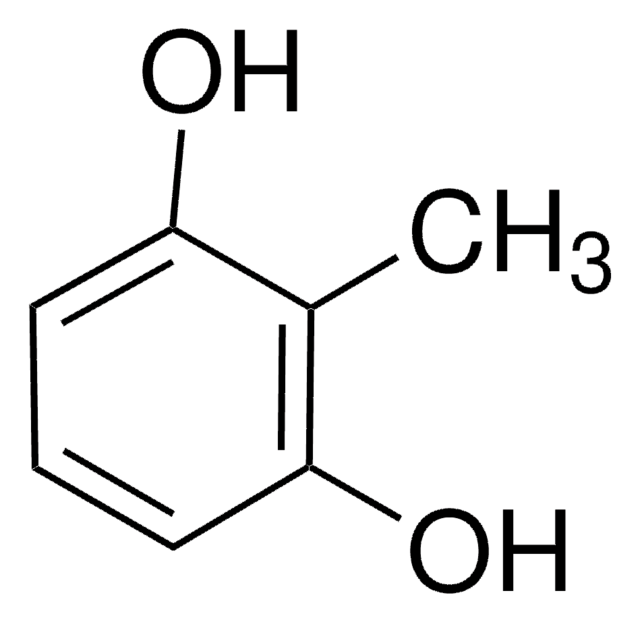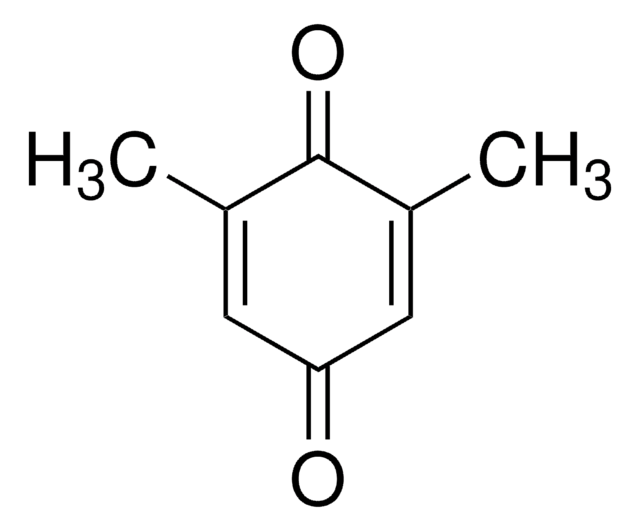おすすめの製品
アッセイ
99%
形状
solid
自己発火温度
851 °F
mp
128-130 °C (lit.)
SMILES記法
Cc1cc(O)ccc1O
InChI
1S/C7H8O2/c1-5-4-6(8)2-3-7(5)9/h2-4,8-9H,1H3
InChI Key
CNHDIAIOKMXOLK-UHFFFAOYSA-N
類似した製品をお探しですか? 訪問 製品比較ガイド
詳細
メチルヒドロキノンは、G103S、G103S/A107GおよびG103S/A107T変異株によるo-クレゾールの酸化によって生成されます。
アプリケーション
メチルヒドロキノンは、以下を調製するための反応物質として使用できます:
- 4,4′-セバコイルジオキシジベンゾイルクロリドとの重縮合反応による、半屈曲性サーモトロピックポリエステル。
- セスキテルペン (±)-ヘリビサボノールA。
- ヘキサクロロシクロトリホスファゼンと反応させることによる、ポリ{ヘキサキス[(メチル)(4-ヒドロキシフェノキシ)]シクロトリホスファゼン}。
- 触媒としてH2SO4の存在下でアセト酢酸エチルで処理することによる、6-ヒドロキシ-4,7-ジメチル-2H-1-ベンゾピラン-2-オン。
生物化学的/生理学的作用
メチルヒドロキノン(トルキノール)は、培養中の内皮細胞および腫瘍細胞の成長をマイクロモル範囲で阻害し、癌およびその他の血管新生関連の病態の治療における有望な薬剤候補です。
シグナルワード
Danger
危険有害性情報
危険有害性の分類
Aquatic Acute 1 - Aquatic Chronic 1 - Eye Dam. 1 - Skin Corr. 1A - Skin Sens. 1 - STOT SE 3
ターゲットの組織
Respiratory system
保管分類コード
8A - Combustible corrosive hazardous materials
WGK
WGK 2
引火点(°F)
341.6 °F - closed cup
引火点(℃)
172 °C - closed cup
個人用保護具 (PPE)
dust mask type N95 (US), Eyeshields, Faceshields, Gloves
適用法令
試験研究用途を考慮した関連法令を主に挙げております。化学物質以外については、一部の情報のみ提供しています。 製品を安全かつ合法的に使用することは、使用者の義務です。最新情報により修正される場合があります。WEBの反映には時間を要することがあるため、適宜SDSをご参照ください。
Jan Code
112968-BULK:
112968-250G:
112968-1KG:
112968-VAR:
この製品を見ている人はこちらもチェック
Ying Tao et al.
Journal of bacteriology, 186(14), 4705-4713 (2004-07-03)
Wild-type toluene 4-monooxygenase (T4MO) of Pseudomonas mendocina KR1 oxidizes toluene to p-cresol (96%) and oxidizes benzene sequentially to phenol, to catechol, and to 1,2,3-trihydroxybenzene. In this study T4MO was found to oxidize o-cresol to 3-methylcatechol (91%) and methylhydroquinone (9%), to
Stefanie Töwe et al.
Molecular microbiology, 66(1), 40-54 (2007-08-30)
Catechol and 2-methylhydroquinone (2-MHQ) cause the induction of the thiol-specific stress response and four dioxygenases/glyoxalases in Bacillus subtilis. Using transcription factor arrays, the MarR-type regulator YkvE was identified as a repressor of the dioxygenase/glyoxalase-encoding mhqE gene. Transcriptional and proteome analyses
C Schewe et al.
Biomedica biochimica acta, 50(3), 299-305 (1991-01-01)
Various polymeric oxidation products of polyphenols strongly inhibited the purified lipoxygenase of rabbit reticulocytes, whereas the prostaglandin H synthase of sheep vesicular gland was only weakly inhibited. The oxidized polymeric preparations of caffeic acid, 2,5-dihydroxytoluene and 3,4-dihydroxytoluene were the most
Van Duy Nguyen et al.
Proteomics, 7(9), 1391-1408 (2007-04-05)
Bacillus subtilis is exposed to a variety of antimicrobial compounds in the soil. In this paper, we report on the response of B. subtilis to the fungal-related antimicrobials 6-brom-2-vinyl-chroman-4-on (chromanon) and 2-methylhydroquinone (2-MHQ) using proteome and transcriptome analyses. Chromanon, a
C Furihata et al.
Japanese journal of cancer research : Gann, 84(3), 223-229 (1993-03-01)
The possible tumor-promoting and tumor-initiating activities of p-methylcatechol and methylhydroquinone in the pyloric mucosa of male F344 rats were studied. Ornithine decarboxylase (ODC) and replicative DNA synthesis (RDS) were used as markers of tumor promotion and DNA single strand scission
ライフサイエンス、有機合成、材料科学、クロマトグラフィー、分析など、あらゆる分野の研究に経験のあるメンバーがおります。.
製品に関するお問い合わせはこちら(テクニカルサービス)
